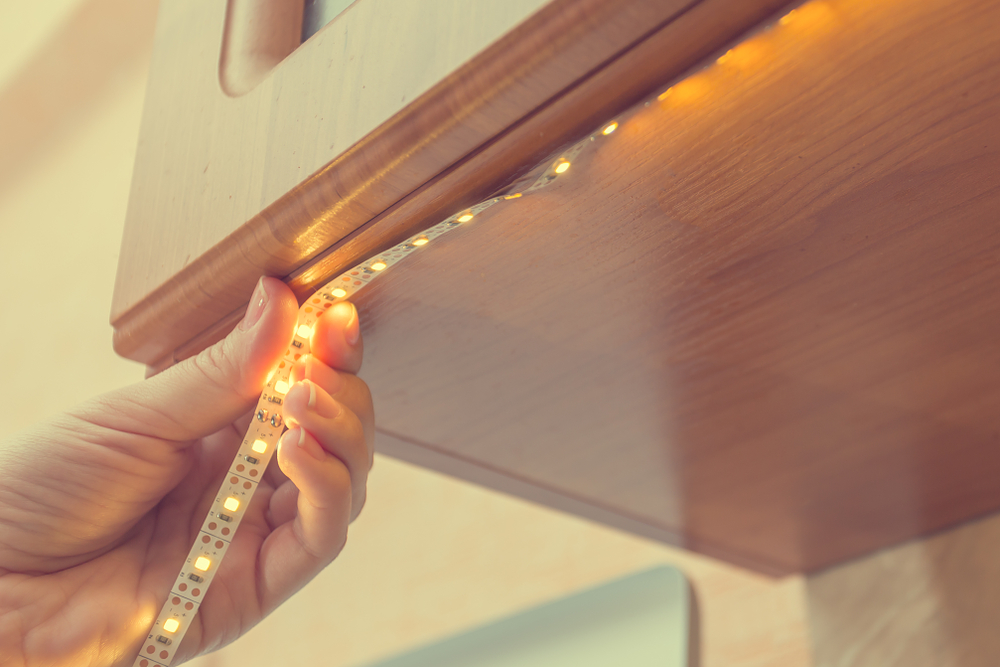According to the Centers for Disease Control and Prevention (CDC)Trusted Source, as of 2015, about 1.02 million people in the United States were blind and about 3.22 million had low vision, even after wearing the best prescribed corrective lenses available. Those numbers are predicted to increase dramatically in the coming years.
While low vision can affect anyone, you have a higher chance of developing age-related vision loss if you’re over 40Trusted Source. The leading cause of vision loss as you ageTrusted Source is age-related macular degeneration (AMD), though glaucoma, cataracts, and diabetic retinopathy risks also increase.
Fortunately, you can take steps to help reduce the impact of low vision. The following tips may help you or a loved one better navigate your home safely, maintain more independence, and maintain a higher quality of life.
Think bigger, buy larger
Smaller objects and text can be harder to see. Consider investing in tools to make seeing everyday objects easier to read.
Consider the following:
- Make large, clear labels for the stove, microwave, and other frequently used devices that have small print.
- Use remotes, phones, and small devices that have large displays.
- Have magnifying glasses around the house for seeing smaller objects.
- Ask your pharmacist about using large print for prescription bottles and medication information.
Make use of lights
Lighting can help improve vision when completing tasks.
When lighting your home, keep in mind that the further you are from the light source, the more powerful a bulb you’ll need to achieve the same level of brightness needed to read or complete other tasks.
Some actionable steps include the following:
- Install under-cabinet lighting, closet lighting, and lighting in low-lit areas.
- Check the wattage of the bulbs in the home and increase their power if needed.
- Experiment with bulb types to find the lighting that works best for you.
- Keep lights on during the day to help minimize glare.
Sixty- to 100-watt bulbs or their equivalents often provide adequate lighting in fixtures.
Take steps to reduce tripping hazards
Certain items around the house can be difficult to see but easy to trip over. Taking steps to eliminate clutter can help, but you can also do things such as:
- remove area rugs
- fix any loose boards or carpet
- if possible, even out the flooring so it’s flat
- use zip ties or other devices to keep cords out of the way
- clean up spills immediately
- keep smaller furniture items and fixtures, such as end tables, stools, and other objects out of walking paths
You can also make walkways safer by positioning furniture with wide spaces between them. This can help you or a loved one avoid knocking into furniture while walking around the house.
Other safety tips
While keeping pathways clear and wide can help with navigating the house, you can take additional steps to make navigating the home safer. Here are some tips:
- Keep the water heater at 120°F (49°C) or lower.
- Change smoke detector batteries twice a year.
- Consider adding safety bumpers on oven racks to avoid burns.
- Install safety bars in the tub and shower as well as handrails on stairs.
Contrasting colors can help you distinguish between and find objects more easily. Try taking these steps:
- Replace doorknobs with lighter colors on dark doors and darker colors on light doors.
- Use covers for outlets and switches that contrast with the color of the walls.
- Mark steps with brightly colored tape.
- Use a light or dark cutting board to contrast against the food being cut.
- Purchase towels that contrast with the bathroom walls.
- Use a large, high-definition TV that offers good contrast.
- When eating, select plates, utensils, cups, bowls, and napkins that contrast with the tabletop and food.
Knowing where an item or object should be may help find it or, in the case of walking around, avoid it. Organizing your or a loved one’s space, including closets, living areas, drawers, and cabinets, may help you better navigate the house and find items.
Once organized, it’s important that you and your family members put things back where they belong. Labeling with color-coded or tactile labeling may also help in locating items.
Make use of talking devices
Many smart home devices and tools are readily available for sale. Some devices, from kitchen scales to home assistant devices, have talking features that can help if you have low vision or blindness.
By replacing as many devices as possible with talking features or voice commands, you can help maintain your or your family member’s independence.
Talking devices may allow you to:
- turn off and on lights or electronic devices
- lock and unlock doors
- create shopping lists or reminders
- read audiobooks or articles
- contact loved ones or emergency services
When to see a doctor
Protecting your vision is an important part of your overall health. Regular eye exams can both help to provide you with the correct script for your glasses and contacts and check for degenerative diseases that can affect your vision in the future.
You should see your eye doctor if you have any sudden changes in vision, including reduced vision, seeing floaters, or odd lights. Also, symptoms related to your eyes often warrant a doctor’s visit, such as pain in the eyes or redness.
It’s also important to schedule and complete any regularly scheduled necessary testing or treatments that your doctor recommends. Prompt diagnosis and treatment can help to preserve vision.
Takeaway
Living with vision loss at any age can be frustrating, but simple changes can increase the quality of life and independence.
In the home, you can take steps to reduce the need for additional help by removing safety hazards, lighting the home well, making use of organization, and investing in some helpful items.








